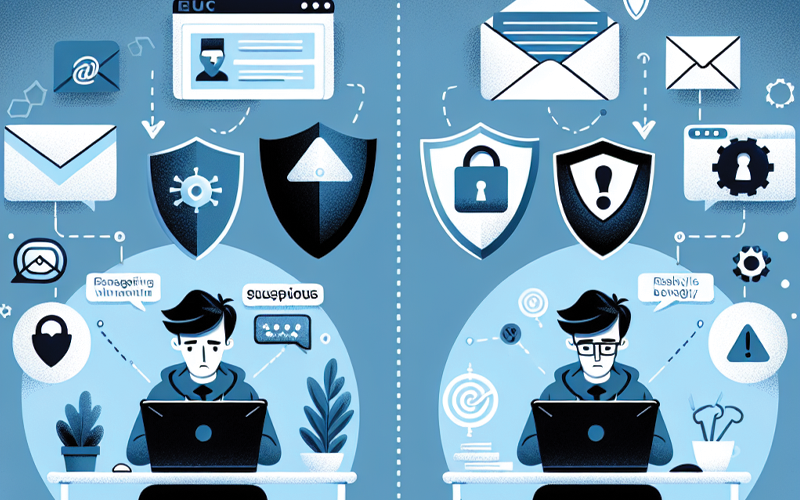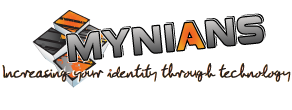Phishing Attack Prevention: Recognizing and avoiding sophisticated social engineering tactics that target your sensitive information
In today’s interconnected digital landscape, cybercriminals have mastered the art of deception. Phishing attacks remain one of the most prevalent and damaging threats facing individuals and organizations alike. These cunning social engineering tactics can bypass even sophisticated technical defenses by exploiting human psychology rather than system vulnerabilities.
According to recent data from the FBI’s Internet Crime Complaint Center, phishing attempts increased by a staggering 110% in just the past year, resulting in over $54 million in reported losses. More concerning still, approximately 97% of users cannot identify sophisticated phishing attempts, leaving virtually everyone vulnerable to these increasingly convincing scams.
This comprehensive guide will arm you with the knowledge and practical skills needed to identify and avoid phishing attacks before they compromise your personal information, financial assets, or organizational security. From recognizing red flags in suspicious emails to understanding the psychology behind these deceptive tactics, you’ll develop an essential layer of protection against this pervasive threat.
The Anatomy of Modern Phishing Attacks
Phishing attacks have evolved dramatically from the obvious “Nigerian prince” scams of yesteryear. Today’s attacks employ sophisticated psychological manipulation, impeccable brand forgery, and targeted approaches that can fool even security-conscious individuals.
At their core, phishing attacks aim to trick victims into revealing sensitive information or taking harmful actions by masquerading as trusted entities. The attackers carefully craft communications—typically emails, text messages, or social media interactions—that appear legitimate but contain malicious links, attachments, or requests.
The most common types of phishing attacks include:
-
Email Phishing: Mass-distributed emails impersonating legitimate organizations to harvest credentials or distribute malware.
-
Spear Phishing: Highly targeted attacks customized for specific individuals using personal information gathered from social media and other sources.
-
Whaling: Executive-targeted phishing that aims for high-value targets like C-suite leaders with access to sensitive company data.
-
Smishing and Vishing: SMS text message and voice call phishing that exploit the perceived trustworthiness of these communication channels.
-
Clone Phishing: Duplicating legitimate communications but replacing links or attachments with malicious versions.
What makes modern phishing particularly dangerous is the level of sophistication. Today’s attacks often feature flawless brand replication, personalized content based on public information, and psychologically manipulative urgency triggers that bypass rational thinking.

Recognizing the Warning Signs: Red Flags That Save Lives
The first line of defense against phishing is developing a trained eye for the subtle indicators that distinguish legitimate communications from fraudulent ones. While attackers continuously refine their techniques, certain telltale signs remain consistent across most phishing attempts.
Suspicious Sender Information
Always scrutinize the sender’s email address carefully—not just the display name. Legitimate organizations use their official domain names (like @amazon.com), whereas phishers typically use similar-looking domains with slight variations (@amazon-secure.com) or completely unrelated domains (@mail123.net). Modern phishing emails may display the correct name but hide a suspicious actual email address.
Urgency and Fear Tactics
Phishing messages commonly create artificial time pressure to short-circuit your critical thinking. Watch for phrases like “Immediate action required,” “Account suspension imminent,” or “48 hours to respond.” This manufactured urgency aims to trigger emotional responses that override careful evaluation.
Poor Grammar and Formatting
While sophisticated attacks have improved dramatically in this area, many phishing attempts still contain subtle linguistic errors, unusual phrasing, or inconsistent formatting that legitimate corporate communications would never include. Look for awkward sentence structures, misused idioms, or strange spacing and font changes.
Suspicious Links and Attachments
Before clicking any link, hover your cursor over it to reveal the actual destination URL. Phishing links often lead to domains that appear similar to legitimate sites but contain subtle misspellings or extra words (www.paypa1.com vs. www.paypal.com). Similarly, unexpected attachments—especially executable files (.exe, .zip, .scr)—should immediately raise concerns.
Unusual or Inappropriate Requests
Be extremely wary of any message requesting sensitive information like passwords, credit card details, or Social Security numbers. Legitimate organizations rarely request such information via email. Similarly, unexpected account verification requests, especially those requiring immediate action, deserve heightened scrutiny.
The Psychology Behind Phishing: Why We Fall for It
Understanding the psychological tactics employed in phishing attacks can significantly improve your ability to resist them. Cybercriminals exploit fundamental human cognitive biases and emotional triggers that affect even the most security-conscious individuals.
Authority and Trust Exploitation
Phishers masquerade as trusted entities—banks, government agencies, respected companies, or even colleagues and superiors—to leverage the automatic trust we assign to familiar authorities. By impersonating these trusted sources, attackers bypass our initial skepticism.
Fear and Urgency Manipulation
By creating artificial time pressure and threatening negative consequences (account closure, financial penalties, legal action), phishers activate our fear response. This emotional state impairs critical thinking and rational decision-making, making victims more likely to comply without thorough verification.
Curiosity and Reward Triggers
Some phishing attempts use positive manipulation, offering enticing rewards, exclusive deals, or intriguing information that seems too good to pass up. Our natural curiosity and desire for rewards can override our security consciousness.
Social Proof and Familiarity
Sophisticated attacks may reference real events, previous interactions, or mutual connections to establish credibility. This social proof lowers our defenses by creating a false sense of familiarity and legitimacy.
Understanding these psychological triggers allows us to recognize when our decision-making might be compromised by emotional manipulation rather than rational evaluation.
Advanced Protection Strategies for Individuals and Organizations
Developing a comprehensive defense against phishing requires both technological solutions and human vigilance. Here are proven strategies that dramatically reduce your vulnerability:
Implement Multi-Factor Authentication Everywhere
Multi-factor authentication (MFA) provides a critical safety net even if credentials are compromised. By requiring a second verification method (typically something you have, like a phone, or something you are, like a fingerprint), MFA prevents account access even when phishers successfully obtain passwords. The Cybersecurity and Infrastructure Security Agency reports that MFA can prevent up to 99.9% of account compromise attacks. Learn more about MFA implementation best practices from CISA.
Adopt Password Management Solutions
Using unique, complex passwords for every account is essential but difficult to maintain manually. Password managers generate and store strong, unique credentials for each service, reducing the damage from any single compromise. Most also include features that help identify phishing sites by refusing to auto-fill credentials on unfamiliar domains.
Verify Through Alternative Channels
When receiving suspicious communications requesting action or information, always verify through a separate, trusted channel. Instead of clicking links in emails, manually navigate to the company’s official website or call their published customer service number to confirm the legitimacy of the request.
Keep Software and Systems Updated
Many phishing attacks deliver malware that exploits known vulnerabilities in outdated software. Maintaining current operating systems, browsers, and applications closes these security gaps. Enable automatic updates whenever possible to ensure continuous protection.
Invest in Security Awareness Training
Regular, engaging security training dramatically improves phishing resistance. According to research from Stanford University, effective security awareness programs can reduce successful phishing attacks by up to 90%. Review Stanford’s research on effective security training.
Comparison: Phishing Protection Solutions
| Protection Method | Effectiveness | Cost | Implementation Difficulty | Best For |
|---|---|---|---|---|
| Email Filtering Services | High (85-95%) | $$ | Low | Organizations of all sizes |
| Security Awareness Training | Very High (reduces susceptibility by 70-90%) | $$ | Medium | Both individuals and organizations |
| Multi-Factor Authentication | Extremely High (prevents 99.9% of account compromises) | $ | Low | Everyone |
| Password Managers | High (prevents credential reuse) | $ | Low | Everyone |
| Anti-phishing Browser Extensions | Medium (60-75%) | Free-$ | Very Low | Individual users |
| AI-based Threat Detection | Very High (90%+) | $$$ | High | Medium to large organizations |
| DNS Filtering | High (blocks known malicious domains) | $$ | Medium | Organizations |
How Mynians Protects You From Sophisticated Phishing Threats
At Mynians, we understand that phishing attacks represent a continuously evolving threat landscape that requires both technological solutions and human expertise. Our comprehensive anti-phishing services combine cutting-edge detection tools with personalized training to create multiple layers of protection for individuals and organizations.
Our cybersecurity experts have developed a multi-faceted approach to phishing protection:
-
Advanced Email Security Gateway: Our proprietary filtering technology analyzes incoming messages for over 50 indicators of phishing, blocking suspicious content before it reaches your inbox. Unlike basic filters, our system uses machine learning to detect even sophisticated, never-before-seen attack patterns.
-
Customized Security Awareness Training: Mynians delivers engaging, personalized training programs that transform employees from security vulnerabilities into human firewalls. Our simulation campaigns safely expose staff to realistic phishing scenarios, providing immediate feedback and education.
-
24/7 Security Operations Center: Our dedicated security analysts provide continuous monitoring and rapid response to emerging threats, ensuring you’re protected against zero-day phishing campaigns targeting your industry.
-
Phishing Incident Response: Should a phishing attack succeed, our rapid response team minimizes damage through immediate containment, forensic analysis, and remediation guidance.
Client Success Story: Regional Healthcare Provider
“After experiencing a serious data breach from a targeted phishing attack, we engaged Mynians to overhaul our security posture. Within six months, their comprehensive solution reduced our susceptibility to phishing by 94%. Their team’s expertise and responsive support have been invaluable in protecting our sensitive patient data.”
- Dr. Sarah Johnson, CIO, Midwestern Regional Hospital Network
Client Success Story: Financial Services Firm
“The personalized training Mynians provided transformed our security culture. Their simulated phishing campaigns identified our specific vulnerabilities, and their remediation training addressed exactly what our team needed. We’ve seen phishing click rates drop from 27% to under 3% in just three months.”
- Michael Chen, CISO, Premier Financial Advisors
Client Success Story: Manufacturing Company
“Mynians didn’t just sell us security tools—they became true partners in our cybersecurity journey. Their email security gateway has blocked thousands of sophisticated phishing attempts that our previous solution missed, and their 24/7 monitoring gives us peace of mind knowing experts are watching our backs around the clock.”
- Jennifer Williams, IT Director, Advanced Manufacturing Solutions

Frequently Asked Questions About Phishing Protection
How can I tell if an email is a phishing attempt?
Look for inconsistencies in the sender’s email address, poor grammar or spelling, unexpected attachments, suspicious links, and urgent requests for sensitive information. When in doubt, contact the purported sender through official channels (not using contact information in the suspicious email) to verify legitimacy.
What should I do if I suspect I’ve clicked on a phishing link?
Immediately disconnect your device from the internet, run a comprehensive antivirus scan, change passwords for any potentially compromised accounts (from a different device), enable multi-factor authentication where possible, and monitor your accounts for suspicious activity. If the incident occurred at work, notify your IT security team immediately.
How effective is security awareness training in preventing phishing attacks?
Extremely effective. Research shows that comprehensive security awareness training can reduce susceptibility to phishing attacks by 70-90%. Regular training that includes simulated phishing attempts creates lasting behavioral changes that technology alone cannot achieve.
Can phishing attacks target mobile devices?
Absolutely. Mobile phishing (smishing via SMS and attacks through social media apps) is increasingly common. Mobile users are often more vulnerable due to smaller screens that hide suspicious URLs and a tendency to respond quickly while on the go. Always verify unexpected messages before taking action, even on mobile devices.
How often should organizations conduct phishing simulations?
Most cybersecurity experts recommend monthly or quarterly phishing simulations, with varying scenarios targeting different departments. This frequency maintains security awareness without creating simulation fatigue. The complexity should gradually increase as employees become more adept at spotting basic attempts.
Taking Action: Your Phishing Protection Roadmap
Protecting yourself and your organization from phishing attacks requires ongoing vigilance and a multi-layered approach. Here’s a practical roadmap to enhance your security posture:
-
Conduct a Security Assessment: Evaluate your current vulnerabilities and establish a baseline for measuring improvement.
-
Implement Technical Safeguards: Deploy email filtering, multi-factor authentication, and endpoint protection solutions.
-
Develop a Security Awareness Program: Create regular training sessions that address the specific phishing threats facing your industry.
-
Establish Clear Reporting Procedures: Ensure everyone knows how to report suspicious communications quickly and without fear of reprimand.
-
Test and Measure: Conduct regular phishing simulations to assess effectiveness and identify areas for improvement.
-
Stay Informed: Cybersecurity threats evolve constantly—maintain awareness of emerging phishing tactics and adjust defenses accordingly.
Remember that phishing protection is not a one-time effort but an ongoing process of education, vigilance, and adaptation to emerging threats.
About the Author
Dr. Marcus Reynolds, CISSP, CEH
Dr. Reynolds serves as Mynians’ Chief Information Security Officer with over 15 years of experience in cybersecurity. He holds a Ph.D. in Computer Science from MIT with a specialization in social engineering defense mechanisms. As a certified ethical hacker and information systems security professional, Dr. Reynolds has helped hundreds of organizations develop resilient anti-phishing programs and has published numerous peer-reviewed articles on human factors in cybersecurity.
Don’t wait until a devastating phishing attack compromises your sensitive information. Mynians’ comprehensive phishing protection services provide the technological safeguards and human expertise needed to defend against even the most sophisticated attacks.
📞 Call 407-374-2782 for a free consultation. 🌐 Visit Us On The Web at: https://mynians.com.


